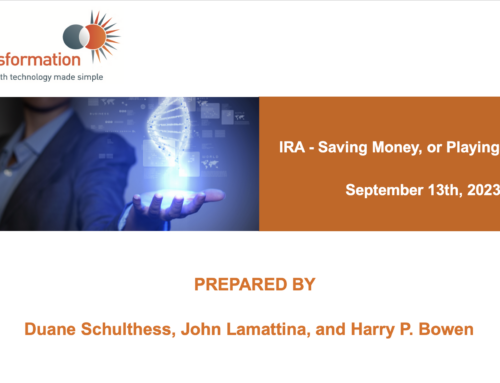After setting out data transparency principles, the industry is now making the case for self-regulation. But the question of what information – if any – should be defined as commercially confidential remains in dispute and this could hinder progress in creating a balanced, practical and trusted system for handling requests for data.
By Nuala Moran
Vital Transformation Workshop, “A Roadmap for Sharing Clinical Trial Data”, 27 August 2013, Vlerick Business School, Brussels.
A framework for data transparency run by the industry is more likely to strike the balance between satisfying legitimate requests for access whilst protecting patient privacy and commercial confidentiality, says Richard Bergström, Director General of the European Federation of Pharmaceutical Industries and Associations (EFPIA). “The European Medicines Agency (EMA) is saying that as regulator, it needs to be in control, but we as the industry think we should do it ourselves,” Bergström told delegates at a workshop convened by EFPIA to set out new principles for clinical data sharing and seek feedback from transparency campaigners and patients’ groups on how they should be applied.
Bergström promised that the principles, which will also be applied by EFPIA’s US counterpart the Pharmaceutical Research and Manufacturers of America (PhRMA), will “dramatically increase” the availability of data. EFPIA and PhRMA will draw up a code of conduct that will be a requirement of membership and will monitor compliance.
But while there is a consensus that protecting patient privacy must be at the heart of any system for data access, there is no agreement on the status of confidential commercial information. In particular, the workshop highlighted the considerable distance between the European Medicines Agency (EMA) and the industry on this issue.
Hans-Georg Eichler, Senior Medical Officer, EMA, told the workshop the Agency respects the need to protect the huge investments that companies make in clinical development programmes but does not believe that would be compromised by the EMA’s intention to systematically publish clinical study reports once the drug to which they relate is approved. “We are of the view that none
Nor is Eichler moved by EFPIA’s argument that false analyses could undermine the integrity of the regulatory system in Europe and/or spark health alarms. “We aren’t scared of that – it has always happened. There may be an uptick, but we can live with it,” he said.

Ben Goldacre, Wellcome Research Fellow in Epidemiology, London School of Hygiene and Tropical Medicine
EFPIA’s data sharing proposals do not satisfy transparency campaigners either: in particular the fact that there is no reference to off-label use and data from retrospective trials are not mentioned. “This promise gets us nothing from the past,” said Ben Goldacre, Wellcome Research Fellow in Epidemiology at the London School of Hygiene and Tropical Medicine, who co-founded the AllTrials transparency campaign.
Goldacre also objected that the panels each pharmaceutical company will set up to review requests for data access are not independent and there will be no routine public audit of requests. “We need to see who tried to get access, and if they were rejected, why and by whom,” he said.
However, Beat Widler, Managing Partner at Widler & Schiemann said tools are available to help pharma companies in implementing disclosure processes that could provide the level of visibility demanded by Goldacre. Widler, who was involved from 2005 onwards in setting up a data disclosure system at Roche also noted that while much clinical trial data is systematically published at present, it would be difficult to publish all trials relating to all currently marketed drugs. “Often companies don’t have the information, because they didn’t do the studies,” he said.
Increased access to data will underpin the move towards patients becoming more involved in their own care, believes Susanna Palkonen, Vice President of the European Patients’ Forum (EPF). However, it is vital that clinicians and patients have access to all information, and at present trials with positive results are twice as likely to be published as trials that are negative. “EPF wants all trials published in a timely manner, regardless of if they are successful or not,” Palkonen said.
For the EPF, a further shortcoming of EFPIA’s data sharing proposals is that the moral imperative – of respect for trial participants – is not stated. “It can be considered that the data belong to participants, and by extension, to the wider society; it can’t be owned by commercial entities or academics,” said Palkonen.
The needs of public health and the industry’s requirements for commercial confidentiality can be reconciled, believes Neal Parker, Section Head Legal, Biologics Strategic Development at Abbvie. “It’s a public health interest to maintain commercial confidentiality to drive business forward,” he told delegates.
Much of the information that is contained in marketing applications is made public currently. In addition, scientists involved in industry sponsored trials regularly present results at conferences. “In other words, a vast amount of data is released without any controversy,” Parker said.
The question of how to decide what of the remaining data is shared depends on a product-by-product analysis of the competitive landscape and will differ company-by-company. For this reason data release “has to be in the control of companies” said Parker. Information on study design, protocols, subject-level and study-level results could be used by other companies to speed up development of competing products.
The case in point here is UCB Pharma’s freedom of information request to the EMA for access to data submitted by Abbvie in the successful application to extend the label on Humira (adalimumab) to the treatment of Crohn’s disease. UCB has a competitor product Cimzia (certolizumab pegol), which is approved by the FDA for treating Crohn’s but does not have EMA approval in this indication.
Although UCB Pharma subsequently withdrew its request, Abbvie has been granted an interim injunction blocking the release of the Humira/Crohn’s file by the EMA. Along with a second injunction granted to Intermune preventing Boehringer Ingelheim getting access to data on Estriet (perfidenone), a treatment for idiopathic pulmonary fibrosis for which Boehringer is developing a potential competitor product, this has put a stop to all other data releases for now.
Despite seeking the injunction, Parker said Abbvie is committed to give access to clinical study reports to allow others to duplicate results and “prove or disprove what the label says.” But third party researchers do not need access to the internal judgements or rationales for routing a product through a particular development pathway to get approval, as articulated in clinical study reports, to be able to test the robustness of the outputs. “Information released without prohibition undermines the public interest in the release of data in the first place,” Parker claimed.
The distance between the industry and the EMA on commercial confidentiality may look like an unbridgeable gulf, but in fact the two have shared interests, believes Jaqueline Bowman-Busato, Director General of EPPOSI. The multi- stakeholder think tank is currently running an assessment of what the considerations should be weighed when decisions to release data are made. “As a lawyer, my advice to EFPIA and EMA is to sit down and lock the lawyers out of the room; there’s a lot of commonality,” Bowman-Busato said.
Whatever the points of difference about specific aspects of transparency, there is a general push to increase access. Another session of the workshop, ‘Building a data sharing health infrastructure’, considered the contribution that this new era of transparency can make to advancing science and healthcare and discussed the practical measures and best practices for data sharing that are needed to realise this potential. Details of this session will be included in a fuller report on the workshop, to be published at a later date.










